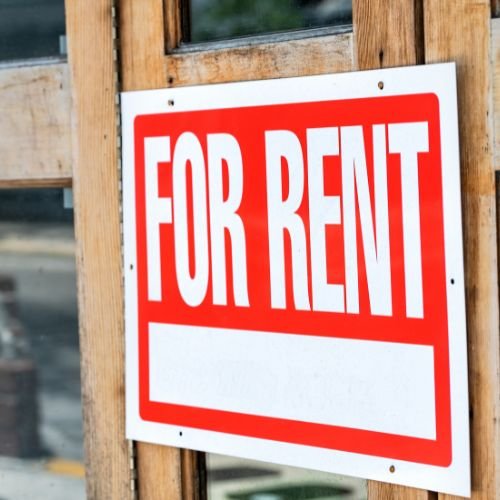Do you own a commercial property that you rent or lease? Have you ever had a tenant leave property behind once their lease or rental agreement was up? Or even if they simply vanished without a trace…. If so, it’s only natural to wonder how to properly handle the abandoned property so that it will not negatively affect you in the future. As you probably imagined, there is a law that addresses exactly that. It is called “The Disposition of Personal Property Landlord Tenant Act”. This act provides clear-cut guidance as to how to deal with property abandoned by a commercial tenant so that you are protected if they show up later to challenge your handling of the matter. Obviously, it is in your best interest to make any reasonable attempts you can to contact and return the abandoned property to the tenant before starting this process, but often those attempts are fruitless and leave you with no other choice.
In Florida, the Disposition of Personal Property Landlord Tenant Act (Florida Statues, Section 715.10 through 715.111) applies specifically to commercial leases, including those in which the tenant has abandoned the premises. If you are a landlord, it would behoove you to carefully read the entire act and familiarize yourself with it.
The Act contains a useful set of rules that are likely to come up more than once. If you, the landlord, remain in compliance with the Act, then Florida Statues, Section 715.11 will aid you in creating a statutory bar to claims against you as the landlord related to the personal property and the disposal of such.
First, landlords are required to give notice before disposing of any abandoned property. Logically, one would think, they left it with no regard as to what may happen to it, but the law is the law and to remain impervious to a lawsuit, you must follow the guidelines set forth by the relevant statutes. The actual form notice provided by the Act is below:
Notice of Right to Reclaim Abandoned Property
To: (Name of former tenant)
(Address of former tenant)
When you vacated the premises at (address of premises, including room or apartment number, if any) , the following personal property remained: (insert description of personal property) .
You may claim this property at (address where property may be claimed) .
Unless you pay the reasonable costs of storage and advertising, if any, for all the above-described property and take possession of the property which you claim, not later than (insert date not fewer than 10 days after notice is personally delivered or, if mailed, not fewer than 15 days after notice is deposited in the mail) , this property may be disposed of pursuant to s. 715.109.
(Insert here the statement required by subsection (2))
Dated: (Signature of landlord)
(Type or print name of landlord)
(Telephone number)
(Address)
The next, and equally important step is to determine the value of the property left behind. Just Market Value should be used to determine the worth of the abandoned property. Once the worth is established, there is an additional insert for the form that has two options depending on if the property is reasonably believed to be worth more or less than $500.
If less than $500, then you the landlord should include:
“Because this property is believed to be worth less than $500, it may be kept, sold, or destroyed without further notice if you fail to reclaim it within the time indicated above.”
If the Just Market Value of the abandoned property is believed to be more than $500 you the landlord should include:
“If you fail to reclaim the property, it will be sold at a public sale after notice of the sale has been given by publication. You have the right to bid on the property at this sale. After the property is sold and the costs of storage, advertising, and sale are deducted, the remaining money will be paid over to the county. You may claim the remaining money at any time within 1 year after the county receives the money.”
In either case, you the landlord must:
· Send the notice by first-class mail to the tenant’s last known (non-premises) address and the landlord believes the notice will not be received there, then the address where the landlord believes it will be received; and
· Describe the property in specific detail;
o If there are multiple items, state the number of them that exist;
o For example, seven (7) [describe color] men’s barber chairs.
This notice should be sent in each and every case where there is any non-trash personal property left by a tenant. Now it’s important to keep in mind that every county’s procedure regarding handling these types of matters will vary. However, your attorney should be able to guide you through this process, or at the very least contact the proper entities tasked with dealing with these types of things. In addition to the steps already laid out by the Disposition of Personal Property Landlord Tenant Act, there are other steps you as the landlord should take to prevent a potentially lengthy dispute. One of the most important, and ultimately beneficial to you, steps you can take is to catalog all items left behind by the tenant by taking detailed photos. Not just the items believed to be of value, or “non-trash” items, but also the ones believed to be without value. That way if the tenant does come back to dispute the condition or value of the items, there will be no grounds to question your handling of the abandoned properties. While this whole process may seem very tedious, the amount of time and headache it can save you, should the tenant reappear to dispute the matter, is invaluable.
Commercial landlords are well served to maintain a relationship with an experienced law firm to assist them with any legal questions or disputes. Woolsey Morcom can assist you if further legal guidance is needed. Call our office at 904-638-4235 or schedule a consultation here.

